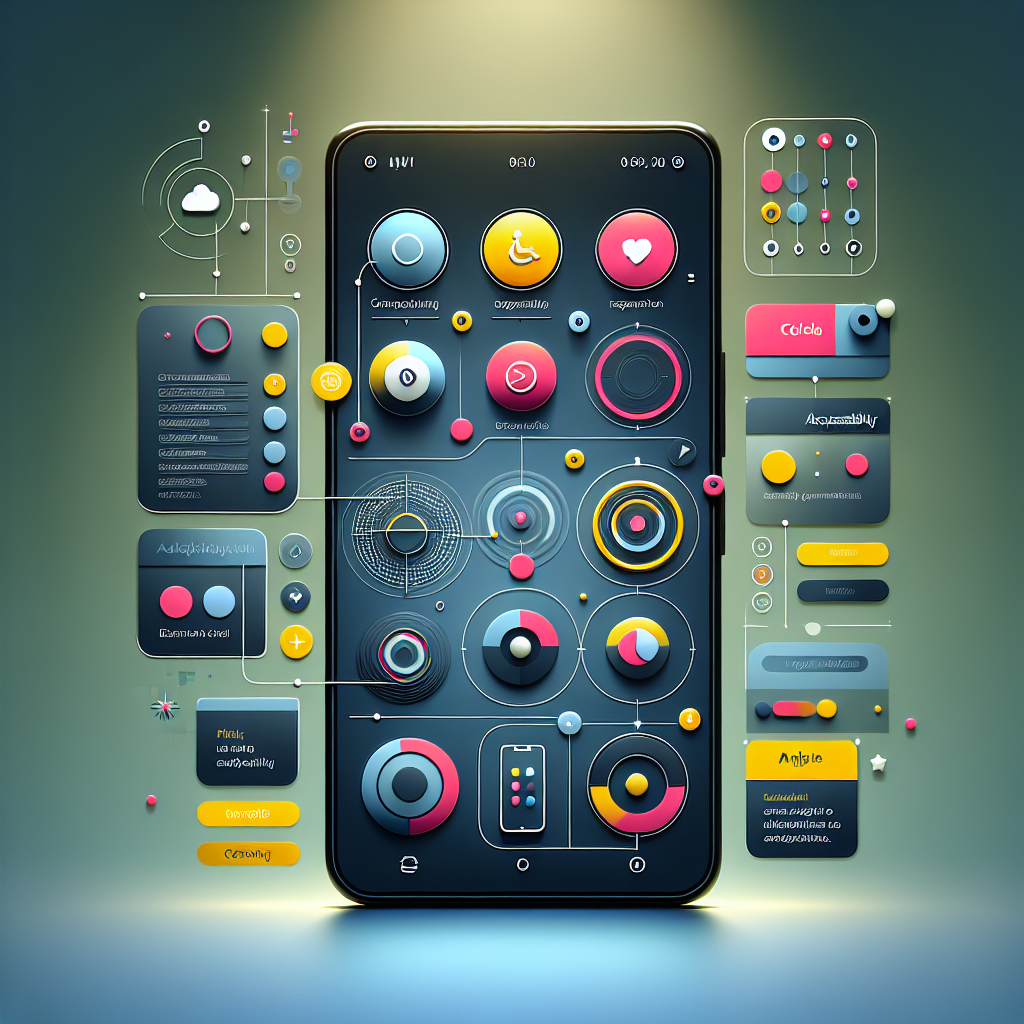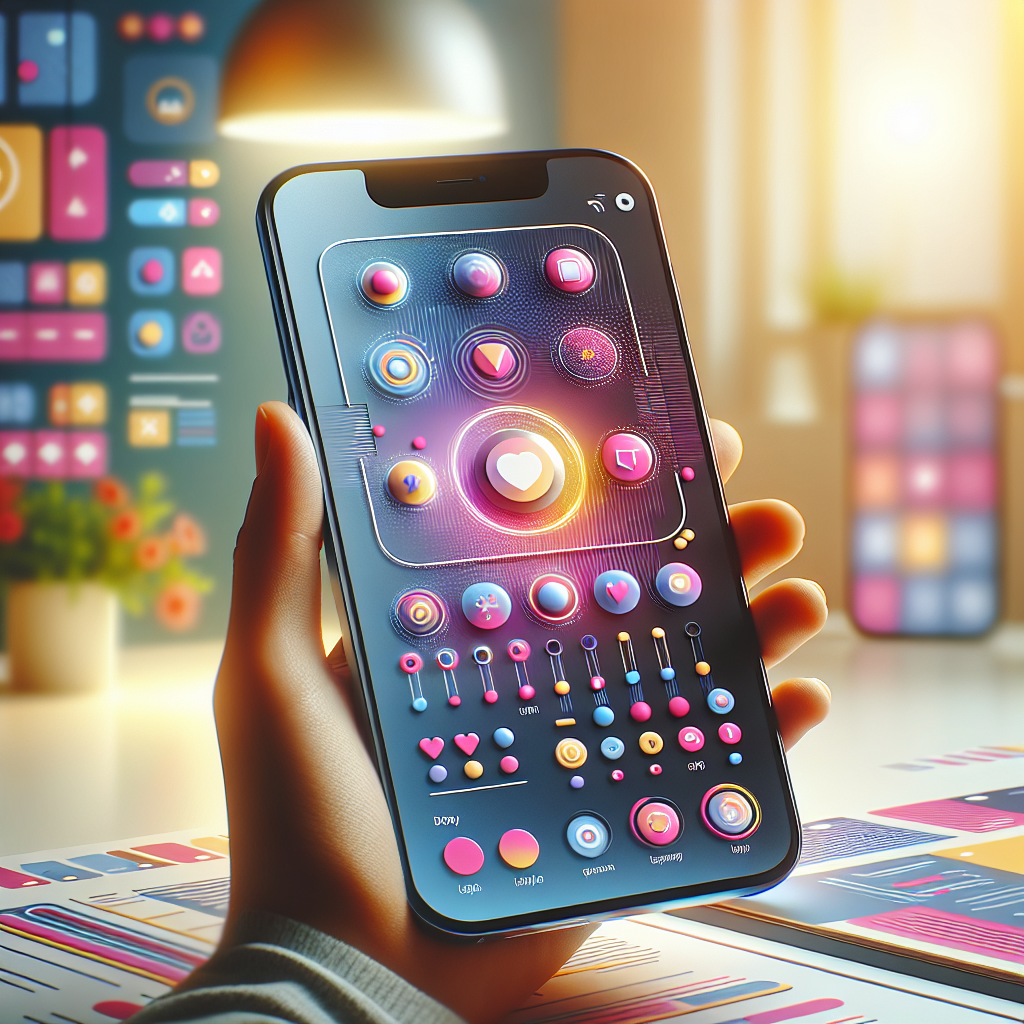In the realm of mobile app development, user interface (UI) design plays a pivotal role in determining the overall success of an application. A well-crafted UI not only enhances the user experience but also increases user engagement and retention. Understanding how to show the user interface of the app effectively can make a significant difference in how users interact with your product.
When approaching UI design, it’s essential to consider several key elements:
- User-Centric Design: Prioritize the needs and preferences of your target audience. Conducting user research can provide invaluable insights into what users expect from your app.
- Consistency: Maintain a consistent layout and design language throughout the app. This includes color schemes, typography, and button styles, which help create a cohesive experience.
- Accessibility: Make your app usable for everyone, including individuals with disabilities. Implementing accessibility features can broaden your user base and improve overall satisfaction.
- Feedback Mechanisms: Incorporate visual and auditory feedback for user actions. This helps users understand the results of their interactions, making for a more intuitive experience.
By focusing on these principles, you can create a user interface that not only looks great but also enhances usability. If you’re looking to delve deeper into UI design strategies and get expert guidance tailored to your specific app, Book A Consultation Now!
Why User Interface Matters in App Development

The significance of user interface (UI) in app development cannot be overstated. It serves as the primary point of interaction between users and the application, influencing how users perceive and utilize the software. A well-designed UI is crucial for several reasons:
- User Experience (UX): A seamless UI contributes directly to a positive user experience. When users find an app easy to navigate, they are more likely to engage with it regularly, leading to higher retention rates.
- First Impressions: The UI is often the first thing users notice. An appealing and intuitive interface can create a lasting first impression, encouraging users to explore the app further.
- Brand Identity: Consistent and thoughtful UI design reinforces a brand’s identity. It helps differentiate your app from competitors and builds brand recognition in a crowded marketplace.
- Conversion Rates: A well-optimized UI can significantly impact conversion rates. Whether it’s completing a purchase or signing up for a newsletter, a user-friendly interface can guide users toward desired actions.
- Feedback and Improvement: A thoughtfully designed UI allows for easier collection of user feedback. By understanding how users interact with the app, developers can make informed decisions about improvements and updates.
In summary, the user interface is a fundamental aspect of app development that directly influences usability, satisfaction, and overall success. By prioritizing UI design, developers can create apps that not only meet user needs but also drive business objectives.
Key Elements of Effective User Interface

Creating an effective user interface (UI) involves understanding and implementing several key elements that enhance usability and engage users. Here are some essential components to consider:
- Clarity: The design should present information clearly and concisely. Avoid cluttering the interface with unnecessary elements, as this can confuse users. Use whitespace effectively to create a sense of organization.
- Consistency: Maintaining a consistent design throughout the app helps users develop familiarity with its functionality. Use uniform colors, fonts, and icon styles to create a cohesive experience.
- Intuitive Navigation: Users should easily find their way around the app without extensive guidance. Implement recognizable icons and straightforward menu structures to ensure intuitive navigation.
- Responsive Design: With various devices and screen sizes available, your UI must adapt seamlessly. A responsive design ensures that your app looks and functions well on smartphones, tablets, and desktops.
- Feedback Mechanisms: Providing users with feedback when they interact with the app is crucial. This can include visual cues, sounds, or haptic feedback that indicate actions have been successfully completed.
- Accessibility: An effective UI should be inclusive, catering to users with different abilities. Implement features such as adjustable text sizes, voice-over support, and color contrast adjustments to enhance accessibility.
By incorporating these key elements, developers can create user interfaces that not only engage users but also enhance overall satisfaction and usability in their mobile applications.
Best Practices for Showcasing User Interface
Showcasing the user interface (UI) of your app effectively is crucial in attracting potential users and ensuring a positive first impression. Here are some best practices to consider when displaying your app’s UI:
- High-Quality Visuals: Use high-resolution images and videos to showcase the app’s UI. Ensure that the visuals are crisp and clearly illustrate the design elements and features of the app.
- Realistic Scenarios: Demonstrate the app in action by using real-life scenarios. This helps potential users visualize how they would interact with the app in their daily lives, enhancing relatability.
- Focus on Key Features: Highlight the most important features of your app. Use annotations or callouts to draw attention to unique functionalities that set your app apart from competitors.
- Interactive Demos: If possible, provide an interactive demo of the app. Allow users to explore the UI themselves, which can create a more immersive experience and encourage engagement.
- User Testimonials: Incorporate feedback from actual users to build credibility. Testimonials can help potential users trust the app and understand its value through the eyes of others.
- Consistent Branding: Ensure that your showcasing materials align with your overall branding. Use consistent colors, fonts, and logos to reinforce brand identity and create a professional appearance.
By implementing these best practices, you can effectively showcase the user interface of your app, making a compelling case for potential users to download and engage with your product.
Tools for Designing User Interface of Your App

Choosing the right tools for designing the user interface (UI) of your app is essential to streamline the development process and enhance creativity. Here are some popular tools that can help you create an outstanding UI:
- Adobe XD: This powerful tool allows designers to wireframe, prototype, and collaborate on app interfaces. Its intuitive features and integration with other Adobe products make it a favorite among professionals.
- Sketch: Exclusively available for macOS, Sketch is known for its vector graphic design capabilities. It offers a range of plugins and integrations, making it ideal for designing and prototyping user interfaces.
- Figma: A web-based design tool, Figma enables real-time collaboration among team members. Its cloud-based platform allows designers to work together from anywhere, making it perfect for remote teams.
- InVision: This tool specializes in prototyping and allows designers to create interactive mockups. InVision also offers features for user testing and feedback, making it easier to refine your designs based on user input.
- Axure RP: For more complex designs, Axure RP provides advanced prototyping capabilities. It allows for the creation of dynamic, interactive interfaces, making it suitable for applications that require extensive user interactions.
- Canva: While not specifically designed for app UI, Canva is an excellent tool for creating graphics and marketing materials. It can help you design promotional visuals that align with your app’s branding.
By leveraging these tools, you can enhance your app’s user interface, ensuring it is both functional and visually appealing, which is crucial for attracting and retaining users.
Conclusion: Enhancing User Experience Through UI

In today’s competitive app market, the importance of a well-designed user interface (UI) cannot be overstated. A thoughtfully crafted UI not only enhances the aesthetic appeal of your app but also significantly improves user experience (UX). When users can easily navigate through your app and access features intuitively, they are more likely to engage and return.
To enhance user experience through UI, consider the following best practices:
- Simplicity: Keep the design simple and uncluttered, allowing users to focus on the essential elements without distraction.
- Consistency: Use consistent colors, fonts, and layouts throughout the app to create a cohesive experience.
- Feedback: Provide immediate feedback to users when they interact with your app, such as visual confirmations for button presses.
- Accessibility: Ensure that your app is accessible to all users, including those with disabilities, by incorporating features like voice commands and adjustable text sizes.
By applying these principles, you can create a user-friendly interface that not only meets the needs of your audience but also elevates your app’s overall success. Investing in a strong UI design is an investment in your app’s future.
If you’re ready to take your app’s user interface to the next level and enhance user experience, Book A Consultation Now!
